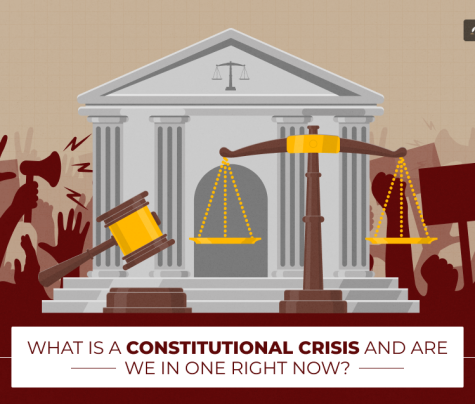
The United States, often hailed as the land of opportunities, has welcomed immigrants from diverse backgrounds for centuries.
Central to the American Dream is the concept of achieving citizenship, a journey that often involves understanding and navigating the intricate pathways available. In this blog post, we will explore the dual aspects of the “Pathway to Citizenship” and the “Adjustment of Status,” shedding light on the complexities, challenges, and triumphs associated with these crucial elements of the U.S. immigration process.
The decision to pursue U.S. citizenship is a profound one, rooted in aspirations for a better life, career opportunities, and a commitment to the ideals that define the nation. As we embark on this exploration, it’s essential to recognize the diversity of backgrounds and motivations that drive individuals to undertake the immigration journey.
Understanding the Pathway to Citizenship
Embarking on the pathway to citizenship involves discerning the various routes available. Family-sponsored immigration, employment-based opportunities, and the Diversity Visa Program represent key channels. Each pathway comes with its own set of eligibility criteria and requirements, making it essential for aspiring citizens to align their ambitions with the appropriate route.
Family-sponsored immigration, for instance, emphasizes the importance of familial ties, allowing individuals to join close relatives already settled in the U.S. Employment-based pathways cater to those with specific skills and contributions to offer, reflecting the dynamic nature of the American workforce. The Diversity Visa Program, on the other hand, provides an avenue for individuals from countries with lower rates of immigration to the U.S.
Through the lens of real-life case studies, we can glean insights into the diverse journeys individuals undertake, showcasing the myriad ways people find themselves on the path to becoming U.S. citizens. These stories serve not only as testaments to personal resilience but also as practical guides for those considering or currently navigating these paths.
Navigating the Adjustment of Status Application
The Adjustment of Status (AOS) process serves as a critical juncture for immigrants seeking permanent residence in the United States. A step-by-step guide to the AOS application process is indispensable, encompassing the completion of Form I-485, the compilation of necessary supporting documents, and the procedural aspects of biometrics and interviews.
Understanding the intricacies of the Adjustment of Status process is paramount. Form I-485, the Application to Register Permanent Residence or Adjust Status, is a key document in this process. It requires meticulous attention to detail, as even a small error can lead to delays or complications. Additionally, the biometrics appointment and interview are crucial steps in the process, where applicants have the opportunity to provide further context to their case.
Common challenges, such as understanding the nuances of the application and overcoming potential hurdles, will be explored in detail, providing readers with a comprehensive understanding of what to expect during this phase of their immigration journey. By addressing these challenges head-on and offering practical solutions, this blog aims to empower individuals going through the Adjustment of Status process.
Key Considerations for Aspiring Citizens
Beyond the technicalities of paperwork and procedures, several key considerations contribute to a successful immigration journey. The importance of seeking legal assistance, understanding financial implications, and being aware of fee waivers can significantly impact the overall experience.
Legal assistance is a cornerstone of a smooth immigration process. Whether through immigration attorneys or reputable organizations providing legal aid, having professional guidance can help individuals navigate complex legal requirements and ensure that their applications are accurate and complete. Financial considerations, including application fees and potential associated costs, are critical aspects that aspiring citizens must plan for. Understanding fee waivers and eligibility criteria for financial assistance is essential for those facing economic challenges.
Additionally, the dynamic nature of immigration policies necessitates a proactive approach. Changes in legislation and executive orders can impact the immigration landscape. Staying informed about these changes and their potential effects on one’s immigration journey is crucial. Regularly checking official government sources and seeking updates from reliable immigration resources helps applicants stay ahead of policy shifts that may affect their cases.
Case Studies: Real Stories of Success
Highlighting the triumphs of individuals who have successfully navigated the pathway to citizenship and adjustment of status adds a personal touch to the narrative. These case studies will serve as inspirational anecdotes, showcasing the resilience, determination, and diverse backgrounds of those who have realized their dreams of becoming U.S. citizens.
Among these success stories, it’s important to highlight the varied challenges individuals may face and the strategies they employed to overcome them. By sharing these experiences, this blog aims to provide a realistic view of the immigration journey, offering encouragement and insights to those currently navigating similar paths.
The Role of Community Support
Recognizing that the immigration journey is not a solitary endeavor, this section will underscore the vital role of community support. Whether through local organizations, support networks, or available resources, the collective effort of communities plays a crucial role in easing the challenges faced by immigrants.
Communities provide not only emotional support but also valuable practical assistance. Local organizations often offer workshops, information sessions, and resources to help individuals understand and navigate the immigration process. Networking with others who have gone through similar experiences fosters a sense of camaraderie and shared knowledge, creating a support system that can be instrumental in overcoming challenges.
Conclusion
In conclusion, the journey to U.S. citizenship is multifaceted, involving careful navigation of pathways and meticulous attention to the adjustment of the status process. By understanding the complexities, seeking support, and staying informed, aspiring citizens can empower their dreams and contribute to the rich tapestry of the American experience. This blog aims to serve as a comprehensive guide, providing valuable insights and practical advice for those on the path to realizing their American Dream.
Read Also:
- Best Law Schools in the World RANKED According to Legal Professionals!
- How To Find A Personal Injury Lawyer In 7 Steps
- The Art Of Negotiating Rent: Tips For Tenants And Landlords










6 Reply
Seeking Justice In Kansas City: How To Choose The Right Medical Malpractice Lawyer
March 27, 2024 at 7:30 pm
[…] Empowering Dreams: The Intersection Of Pathway To Citizenship And Adjustment Of Status […]
ReplyHow To Successfully Navigate The Legal Process For Slip And Fall Compensation
January 4, 2024 at 7:51 am
[…] Empowering Dreams: The Intersection Of Pathway To Citizenship And Adjustment Of Status […]
ReplyDifference Between Negligence And Malpractice?
December 20, 2023 at 12:03 pm
[…] Empowering Dreams: The Intersection Of Pathway To Citizenship And Adjustment Of Status […]
ReplyUnderstanding Wrongful Death Lawsuits: A Step-By-Step Guide For Families
December 15, 2023 at 4:53 am
[…] Empowering Dreams: The Intersection Of Pathway To Citizenship And Adjustment Of Status […]
Replywwd.com
October 29, 2023 at 3:36 am
I'm not sure exactly why but this web site is loading very slow for me. Is anyone else having this issue or is it a problem on my end? I'll check back later on and see if the problem still exists.
ReplyHow A Personal Injury Law Firm Can Help
October 28, 2023 at 11:10 am
[…] Empowering Dreams: The Intersection Of Pathway To Citizenship And Adjustment Of Status […]
Reply